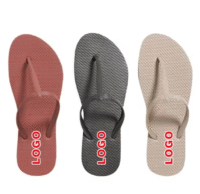Slash utility costs with smart home upgrades and habits. Discover easy, effective ways to boost energy efficiency and save money. Read on to learn more.
For many homeowners, energy bills seem to creep higher month after month. Whether it’s heating in the winter, cooling in the summer, or the constant hum of appliances, energy use can feel unavoidable. The good news? With some smart strategies, you can slash your costs while keeping your home comfortable year-round. Welcome to your energy-savvy guide—where saving money and saving the planet go hand in hand.
1. Start with an Energy Audit
Before you dive into upgrades, it’s important to understand where your energy is going. An energy audit—offered by many utility companies—can identify leaks, inefficient systems, and problem areas in your home. You’ll get a clear picture of:
- Where heat escapes in the winter
- Which appliances are drawing the most power
- Opportunities to improve insulation and sealing
Think of it as getting a health checkup for your house.
2. Seal and Insulate
Air leaks are a major cause of rising energy bills, allowing warm or cool air to slip out through gaps around windows, doors, and ductwork. To combat this, seal openings with quality weatherstripping and caulking. It’s also wise to beef up insulation in the attic and basement—areas where heat loss is often the most significant.
For older or inefficient windows, consider window replacement in Salt Lake City to further improve your home’s thermal barrier. With proper sealing and insulation, you could cut heating and cooling expenses by as much as 20%, making it one of the most effective and affordable ways to boost energy efficiency.
3. Upgrade Your Lighting
Switching from incandescent bulbs to LEDs is one of the easiest and cheapest changes with a fast payoff. LED bulbs use up to 80% less energy and can last 25 times longer than traditional bulbs.
For bonus savings, pair your lighting with motion sensors or timers to make sure lights aren’t left on when not needed.
4. Choose Energy-Efficient Appliances
When it’s time to replace appliances, look for the ENERGY STAR® label. These models meet strict efficiency guidelines set by the U.S. Environmental Protection Agency.
- A modern ENERGY STAR refrigerator can use 40% less energy than models from just 10 years ago.
- Upgrading to an energy-efficient washing machine can save thousands of gallons of water each year.
While the upfront cost may be slightly higher, the long-term savings on your utility bills make these upgrades worthwhile.
5. Master Your Thermostat
Heating and cooling account for about half of a typical household’s energy use. That means your thermostat is a major player in your energy savings strategy.
- Lower the thermostat by 7–10°F for 8 hours a day in the winter to save up to 10% annually on heating.
- Raise it in the summer when you’re away from home.
Consider a smart thermostat that automatically adjusts temperatures based on your schedule and learns your preferences for maximum comfort and efficiency.
6. Harness the Power of the Sun
Natural sunlight is free—so make the most of it. In the winter, open curtains on south-facing windows during the day to warm your home naturally. In the summer, close blinds during the hottest parts of the day to keep cool air in.
If you’re ready for a bigger investment, consider installing solar panels. While the upfront cost can be significant, many homeowners recoup their investment through reduced electricity bills and available tax incentives.
7. Maintain Your HVAC System
Your heating, ventilation, and air conditioning system needs regular care to run efficiently.
- Change or clean filters every 1–3 months.
- Schedule annual professional tune-ups.
- Keep vents and ducts clean and unblocked.
A well-maintained system not only saves energy but also extends the life of your equipment.
8. Use Power Strips to Eliminate Phantom Loads
Even when turned off, many electronics still draw small amounts of power—known as phantom loads. Plugging devices into a smart power strip allows you to completely cut power when they’re not in use. Over time, these small savings add up, especially for home offices or entertainment systems.
9. Practice Smart Water Heating
Water heating can account for 14–18% of your energy use. To cut costs:
- Lower the water heater temperature to 120°F.
- Insulate your water heater and the first few feet of hot water pipes.
- Install low-flow showerheads and faucets.
If your water heater is over 10 years old, upgrading to a high-efficiency or tankless model can yield significant savings.
10. Make Energy Efficiency a Habit
Technology and upgrades help, but daily habits make a difference too:
- Turn off lights when leaving a room.
- Wash clothes in cold water.
- Run dishwashers and washing machines only with full loads.
These small actions, repeated consistently, can lower your bills without you even noticing the effort.
Final Thoughts
Becoming an energy-savvy homeowner isn’t about sacrificing comfort—it’s about making smarter choices. By combining strategic upgrades with mindful habits, you’ll enjoy a home that’s both more affordable to run and gentler on the environment. Your wallet will thank you, and so will the planet.














Leave a comment